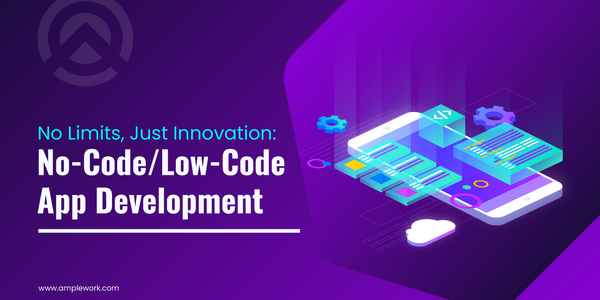No-code platforms are revolutionizing the web development landscape, offering a new path for creating digital solutions with minimal or no coding skills. These platforms provide an accessible and efficient way for non-programmers and entrepreneurs to bring their ideas to life, bridging the gap between technological innovation and those with brilliant ideas but limited coding knowledge. The emergence of no-code platforms is democratizing web development, making it an inclusive field for individuals from various backgrounds.
The Appeal of No-Code Platforms
The no-code movement is gaining momentum due to several compelling advantages that align with the needs of modern businesses and entrepreneurs.
Rapid Prototyping and Deployment
No-code platforms facilitate a much faster development process compared to traditional coding. With the ability to quickly prototype and iterate, businesses can test their ideas in the market sooner. This agility is crucial in today's fast-paced digital landscape where being first can often mean the difference between success and failure.
Cost Efficiency
Developing software through traditional means can be costly, especially for startups and small businesses. Hiring experienced developers or outsourcing development work adds significant expenses. No-code platforms, on the other hand, significantly reduce these costs, as they allow non-developers to take charge of the development process, minimizing the need for a large development team.
Bridging the Technical Skills Gap
The demand for technical talent far exceeds the supply. No-code platforms help mitigate this issue by enabling individuals without a technical background to create sophisticated web applications. This democratization of development can lead to more innovation as more people are empowered to bring their ideas to life without being hindered by the lack of technical skills.
No-Code Platform Examples
Various no-code platforms cater to different needs, from building simple websites to complex web applications. Here are a few notable platforms:
- Webflow: Webflow offers a powerful platform for designing and launching responsive websites without any coding. It provides a visual interface that generates production-ready HTML, CSS, and JavaScript.
- Bubble: Bubble is a versatile no-code platform for building web and mobile applications. It offers a point-and-click editor and the capability to create complex, data-driven applications.
- Zapier: Zapier allows users to automate workflows by connecting different apps and services without writing any code. It's especially useful for automating repetitive tasks and integrating various tools.
Getting Started with a No-Code Platform: An Example
Let's explore how easy it is to start with a no-code platform using Webflow as an example.
Step 1: Sign Up and Choose a Template
First, create an account on Webflow. Once logged in, you can start a new project and choose from various templates based on your project's needs. These templates are designed by professionals and can be customized extensively.
Step 2: Customize Your Site
Using Webflow's visual editor, you can drag and drop elements to design your pages. Whether it's adding text, images, videos, or custom forms, Webflow's interface makes it straightforward. You can also define animations and interactions to make your site more engaging.
Step 3: Publish Your Site
Once you're satisfied with your design, publishing your site is just a click away. Webflow hosts your site, and you can choose to connect a custom domain if you have one. The platform takes care of the backend, security, and scaling, so you can focus on your content and design.
The Impact on the Future of Web Development
The rise of no-code platforms is not only changing who can develop web applications but also how they are created. It encourages a more diverse group of people to participate in web development, fostering innovation from different perspectives. While it's unlikely that no-code platforms will completely replace traditional development, they complement it by allowing more individuals and businesses to participate in the digital economy.
No-code platforms are indeed making waves in the web development community, offering a new paradigm of how digital products are created and who gets to create them. As these platforms continue to evolve and become more sophisticated, we can expect to see an even greater shift towards a more inclusive, diverse, and innovative digital landscape. .
No-code platforms are reshaping the web development ecosystem by making technology creation accessible to all. Their rise underscores a pivotal shift towards inclusivity and efficiency in the digital age, facilitating innovation across diverse sectors.
